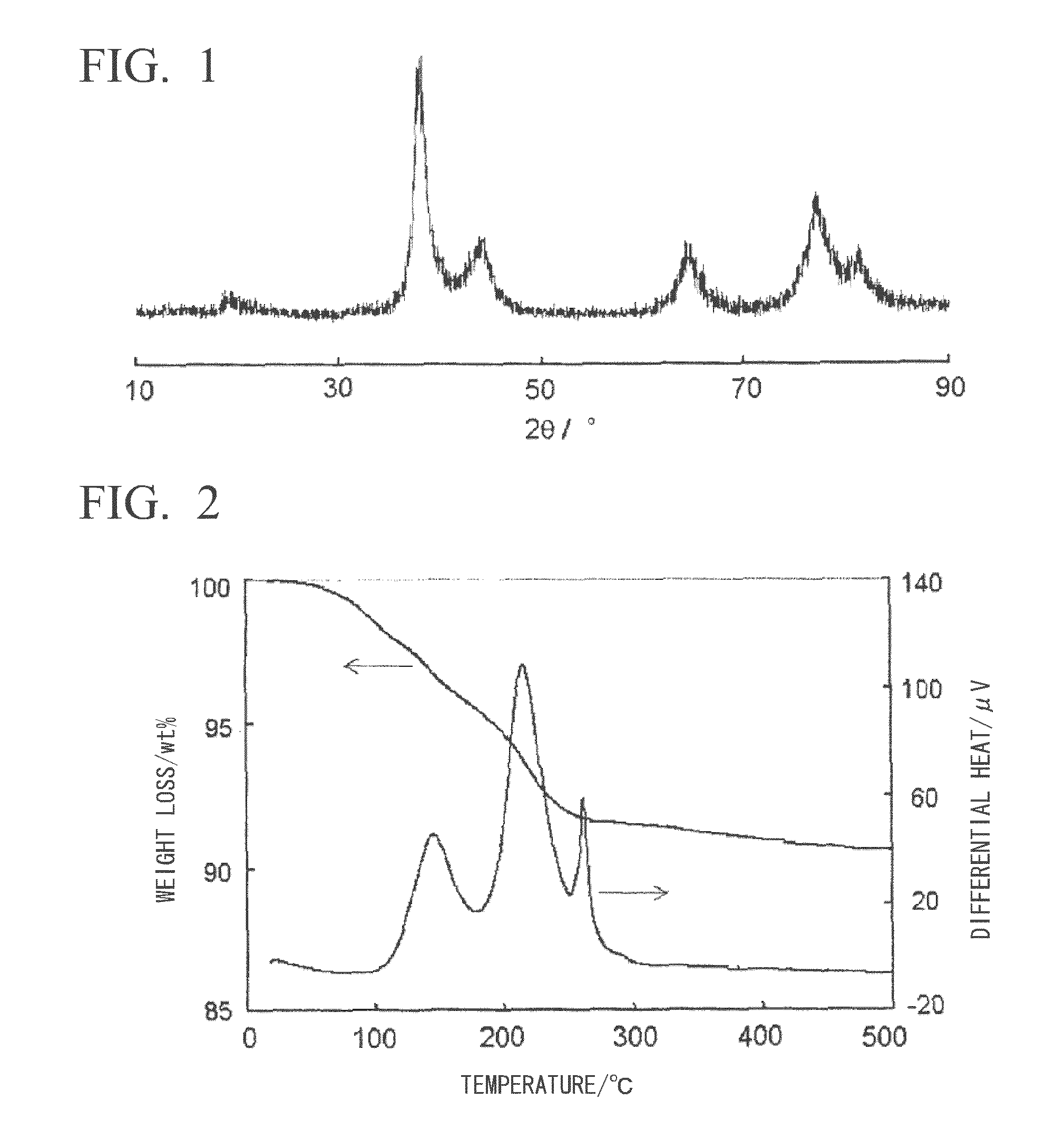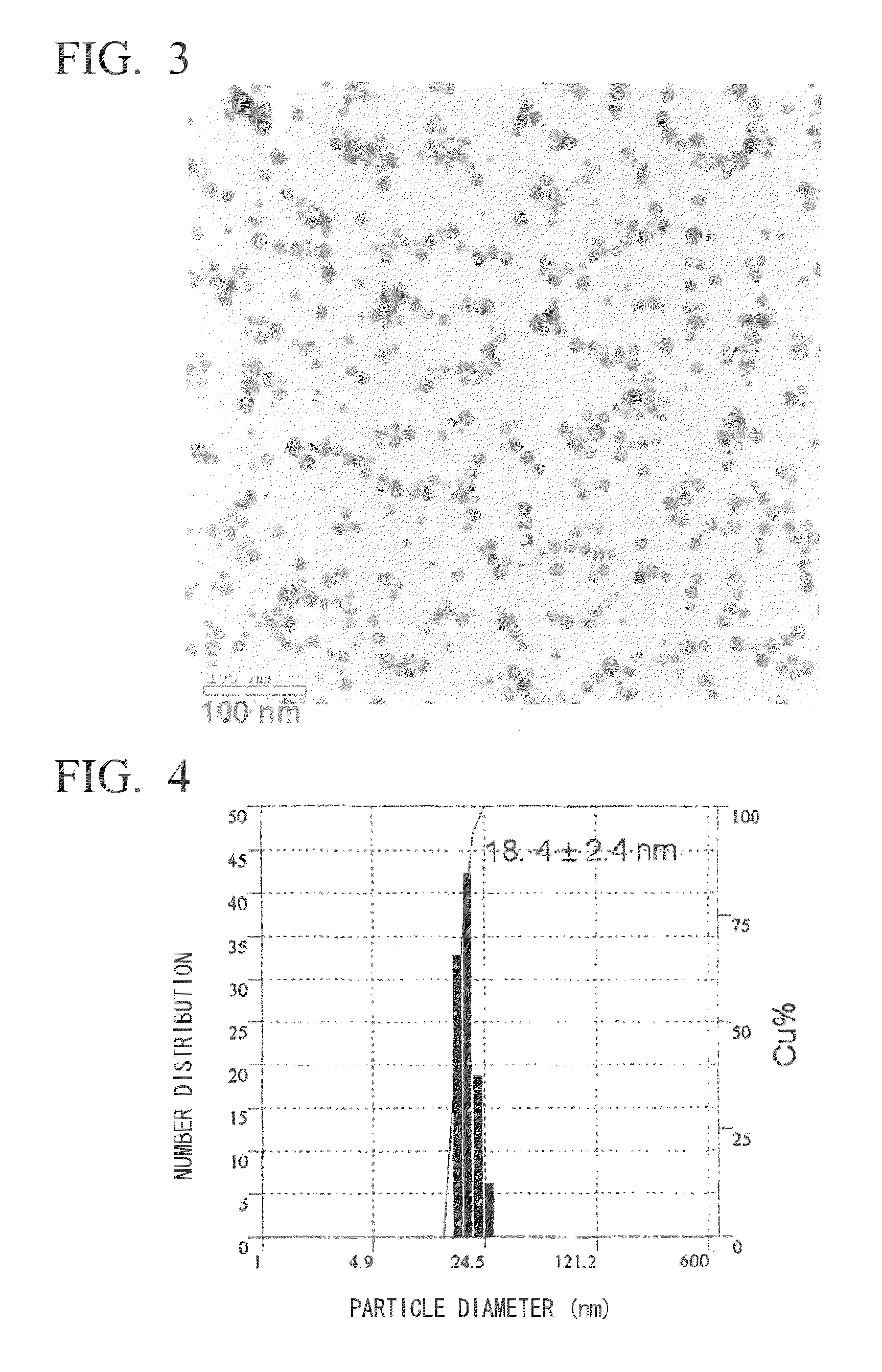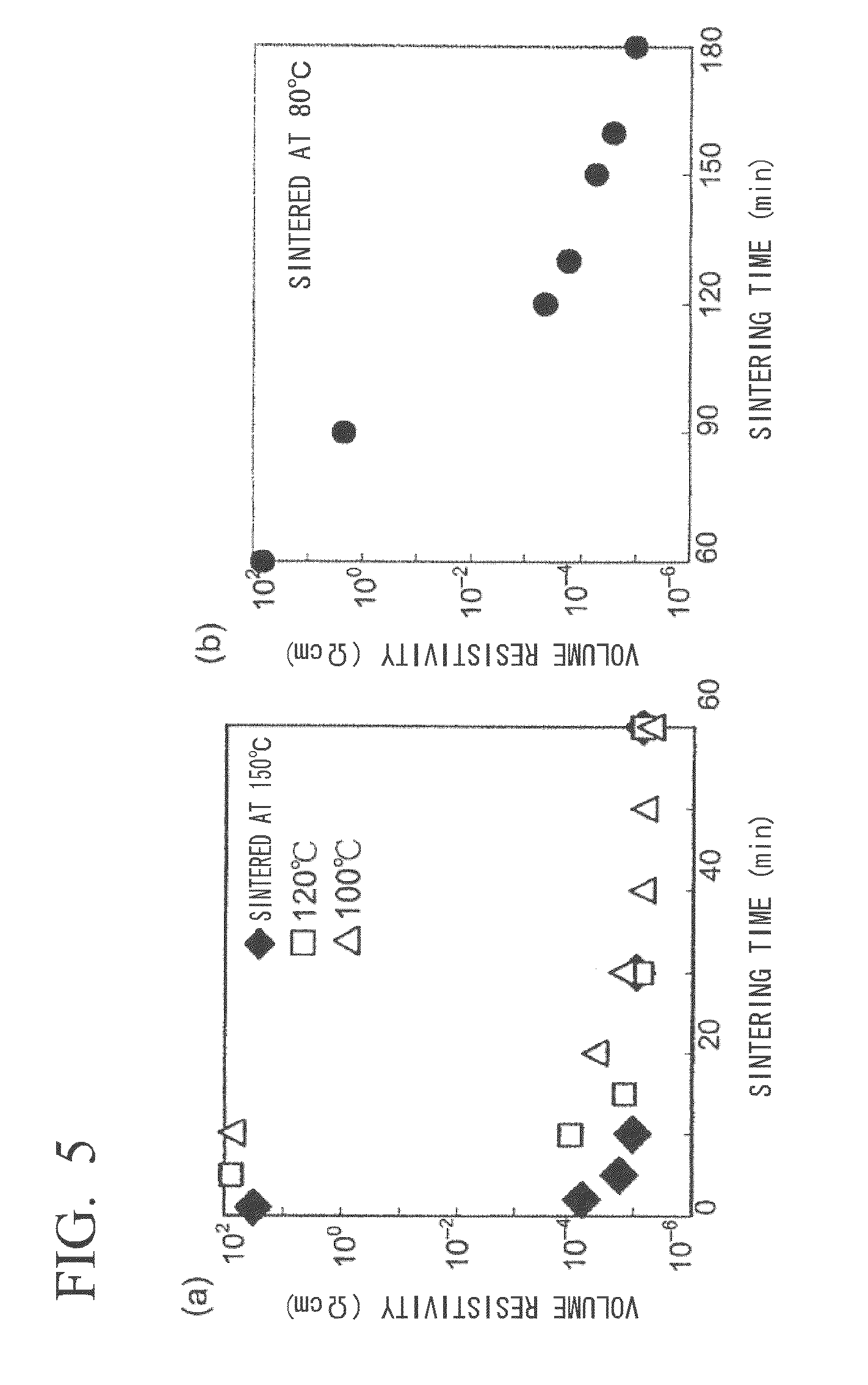Coated silver nanoparticles and manufacturing method therefor
a technology of silver nanoparticles and manufacturing methods, applied in the direction of electrically-conductive paints, conductive layers on insulating supports, conductors, etc., can solve the problems of insufficient examination or disclosure of their sintering temperature and electrical conductivity, and the inability to obtain coarse particles, so as to reduce energy and resource consumption. , the effect of reducing the amount o
- Summary
- Abstract
- Description
- Claims
- Application Information
AI Technical Summary
Benefits of technology
Problems solved by technology
Method used
Image
Examples
example 1
[0092]2.04 g (20.0 mmol) of N,N-dimethyl-1,3-diaminopropane (Tokyo Chemical Industry, special grade), 1.94 g (15.0 mmol) of n-octylamine (Kao, purity: 98%) and 0.93 g (5.0 mmol) of n-dodecylamine (Kanto Chemical, special grade) were mixed followed by the addition to this mixed solution of 6.08 g (20.0 mmol) of silver oxalate (synthesized from silver nitrate (Kanto Chemical, grade 1) and ammonium oxalate monohydrate or oxalic acid dihydrate (Kanto Chemical, special grade) and stirring for 3 minutes to prepare an oxalate ion-alkylamine-alkyldiamine-silver complex compound. When this was stirred for 20 to 30 minutes while heating at 95° C., a reaction accompanied by foaming of carbon dioxide was completed, and the reaction mixture changed to a suspension having a blue glossy color. When 10 mL of methanol (Kanto Chemical, grade 1) were added thereto and the precipitate obtained by centrifugal separation was air-dried, 4.62 g (97.0% yield based on silver) of a solid were obtained in the ...
example 2
[0097]The dispersibility of the coated silver nanoparticles obtained in Example 1 in solvent was evaluated. As a result, the coated silver nanoparticles favorably dispersed in n-butanol (Kanto Chemical, special grade) and a mixed solvent of n-butanol and n-octane (Kanto Chemical, special grade). The resulting coated silver nanoparticles were determined to favorably disperse at a number average particle diameter of 18 nm based on dynamic light scattering particle size measurement (Otsuka Electronics ELS-Z2M) of the resulting n-butanol and n-octane mixed solvent dispersion (FIG. 4). In addition, dispersions of coated silver nanoparticles having concentrations of 30% by weight or more were also able to be prepared from the resulting solid, and based on the ultraviolet-visible absorption spectra (Shimadzu UV3150) of those dispersions, a surface plasmon band was observed that was derived from coated silver nanoparticles having a maximum wavelength of less than 400 nm. In addition, the di...
example 3
[0098]Low-temperature sinterability was evaluated for the coated silver nanoparticles obtained in Example 1. A spin-coated film of the coated silver nanoparticles was fabricated on a polyethylene terephthalate (PET) substrate (Fuji Film Axia, OHP sheet) using the n-butanol dispersion of coated silver nanoparticles prepared in Example 2. The coated substrate was heat-sintered at 60° C., 80° C., 100° C., 120° C. and 150° C. followed by measurement of the electrical resistance thereof (Kyowa Riken, K-705RS, four-point probe method) (FIG. 5, logarithmic scale displayed on vertical axis). In the case of sintering at 150° C., a favorable electrically conductive film (metal gloss film) having volume resistivity of 10−5 Ωcm to 10−6 Ωcm near that of metallic silver was obtained in 10 minutes (FIG. 5(a)). After heating for 30 minutes in the case of sintering at 120° C., or after heating for 40 minutes in the case of sintering at 100° C., volume resistivity of 10−5Ωcm to 10−6 Ωcm was reached (...
PUM
| Property | Measurement | Unit |
|---|---|---|
| mean particle diameter | aaaaa | aaaaa |
| temperature | aaaaa | aaaaa |
| boiling point | aaaaa | aaaaa |
Abstract
Description
Claims
Application Information
 Login to View More
Login to View More - R&D
- Intellectual Property
- Life Sciences
- Materials
- Tech Scout
- Unparalleled Data Quality
- Higher Quality Content
- 60% Fewer Hallucinations
Browse by: Latest US Patents, China's latest patents, Technical Efficacy Thesaurus, Application Domain, Technology Topic, Popular Technical Reports.
© 2025 PatSnap. All rights reserved.Legal|Privacy policy|Modern Slavery Act Transparency Statement|Sitemap|About US| Contact US: help@patsnap.com



